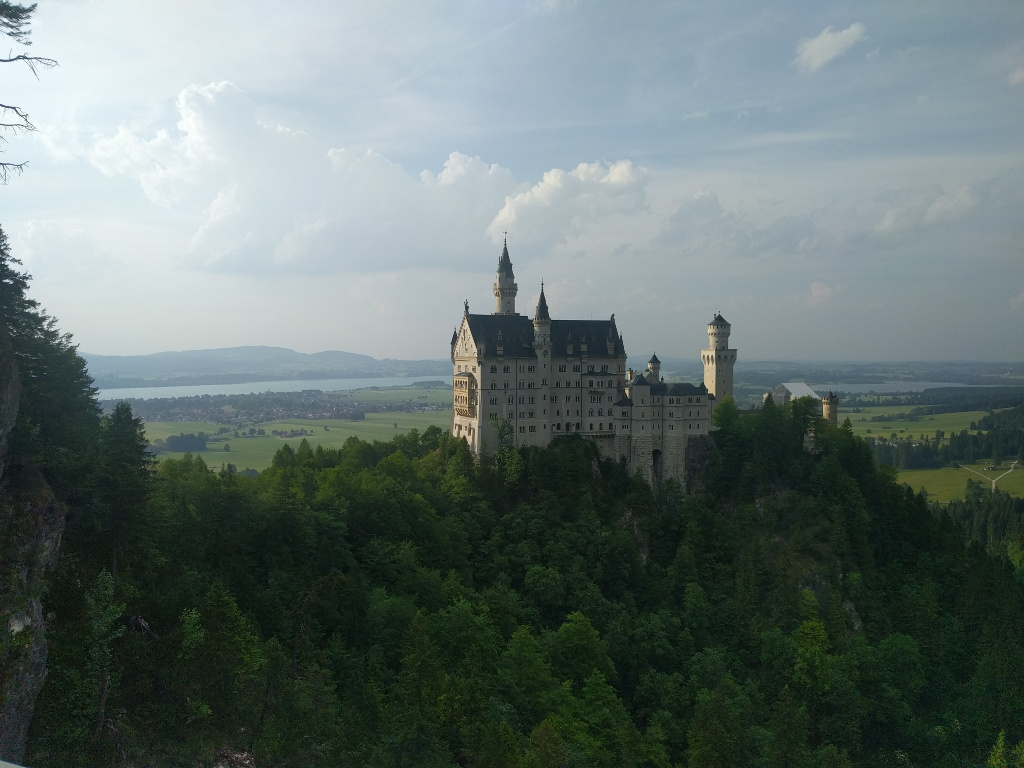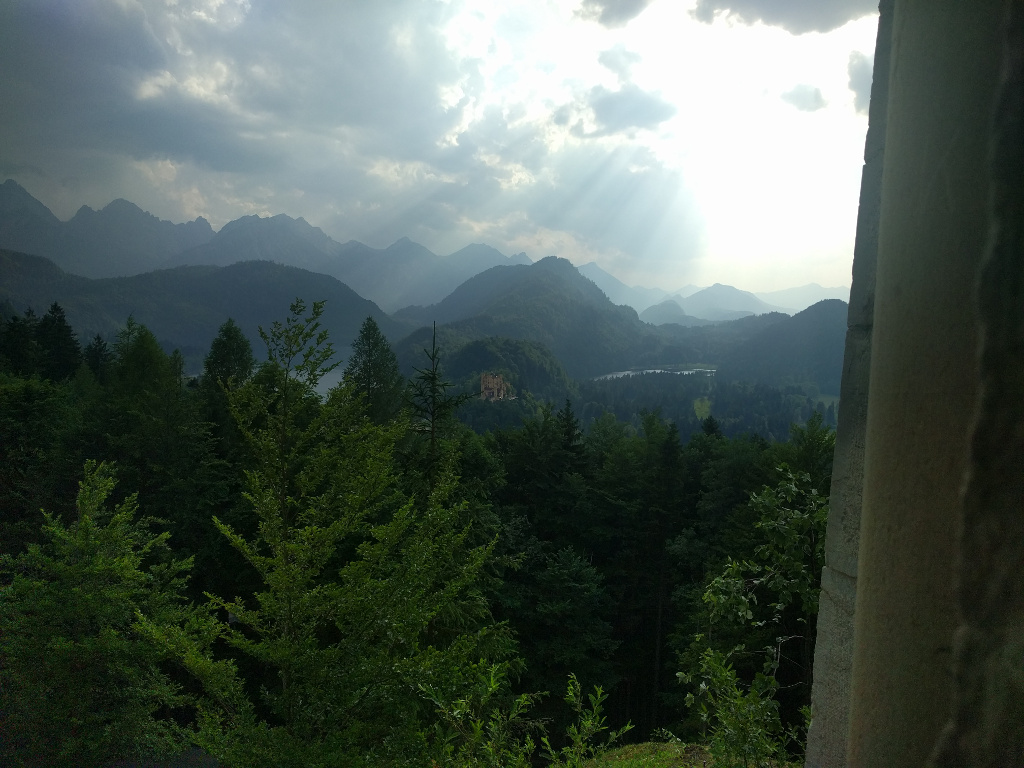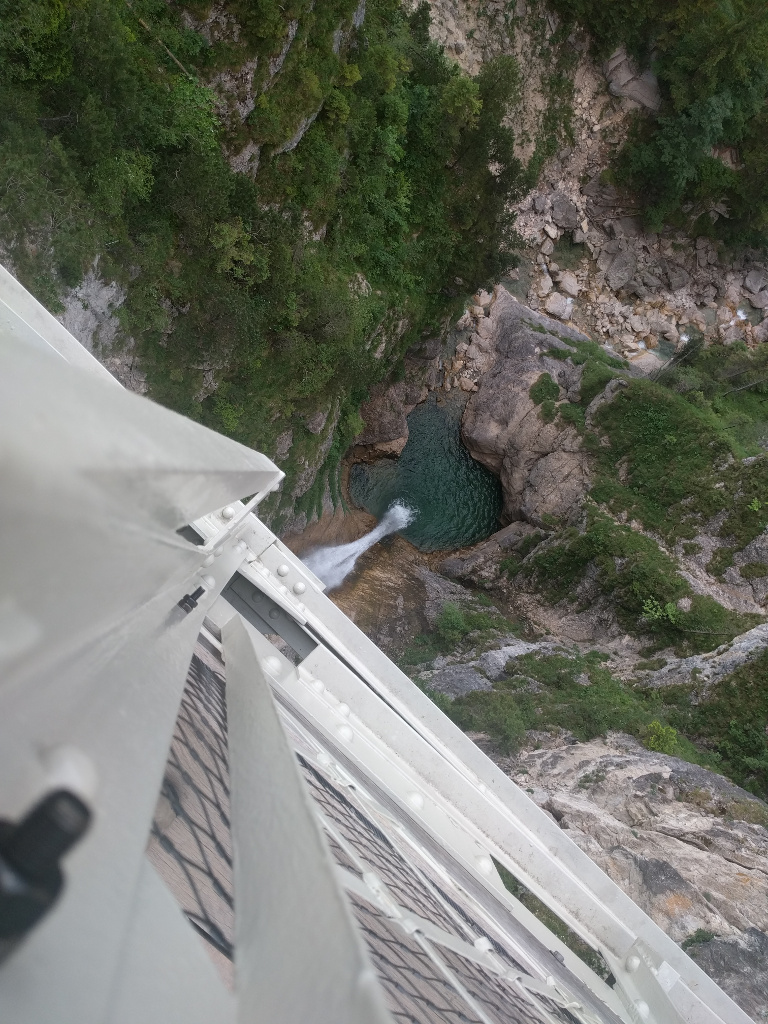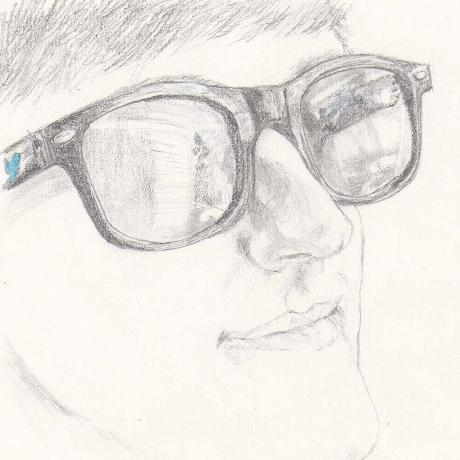I think either 21 days is the perfect length for a vacation, or I need to take a break at some point. Even Jason says I seem tired, and that’s the pot calling the kettle black.
So while we’re all slowly going crazy, and having a great time doing it, a long time ago there was a king, King Ludwig, who through various political twists and turns in the mid-to-late-1800s had and lost political power. When he lost it, he too went crazy and claimed a mountain has his own and built a castle on it, modeling it after the castles of the medieval times and exerting absolute power over the region.
Today, millions of people visit Neuschwanstein every year. Disney used it as an inspiration for the Cinderella castle (and Chillon was apparently the inspiration for the Sleeping Beauty castle, so that’s two we’ve visited).

They don’t permit photographs inside the Neuschwanstein, so there’s a dearth of photos today.
It was interesting to visit someone’s copy of a medieval castle after visiting an actual medieval castle. Some things got lost in translation. The general architecture, the exterior lines and the vaulted ceilings, were largely retained. However, the practicality found in the castle Chillon was lost in translation. While the doors and stairways did become larger, sometimes the spiral staircases spiraled the wrong way (spiral staircases spiral one particular way, to hinder attackers coming up while swinging a sword). The windows had beveled interior edges, as if they were archery posts, but the windows were wide so the bevels didn’t give archers any extra elbow room.
This is fine, though, because the castle was never functional as a castle. It was only barely functional as a palace, Ludwig only stayed there a handful of days before he died. Much of the castle was never completed, he died in debt and construction was largely abandoned.
We can only access the inside the castle via guided tours with no photographs allowed, so my descriptions will have to suffice.
The castle can be described in two terms: it’s inspired by the knights of the round table, and Ludwig liked swans. Throughout the castle are murals of the exploits of the round table, with random swans added in. One depicted a knight crossing a river in a boat to meet some people. The boat was being pulled by a swan.
One room had over 170 paintings and engravings of swans.
Another room had a life-sized porcelain swan, which was hollowed out to serve as a flower vase.
After the tour, we went out on a balcony that overlooked the valley, and admired the beauty of the scenery. The mountain range stretched into the haze, fading into silhouettes before smoothly fading into the gray horizon in the distance. Below several lakes were nestled in between the mountains, their waters reflecting the setting sun.
Worth going, if only for the view.

The castle sits on a foothill that’s immediately before the mountains, with a dramatic gorge going up into them. Where there’s a gorge, there’s a waterfall.
Here there were several, threading their way through the hills.

